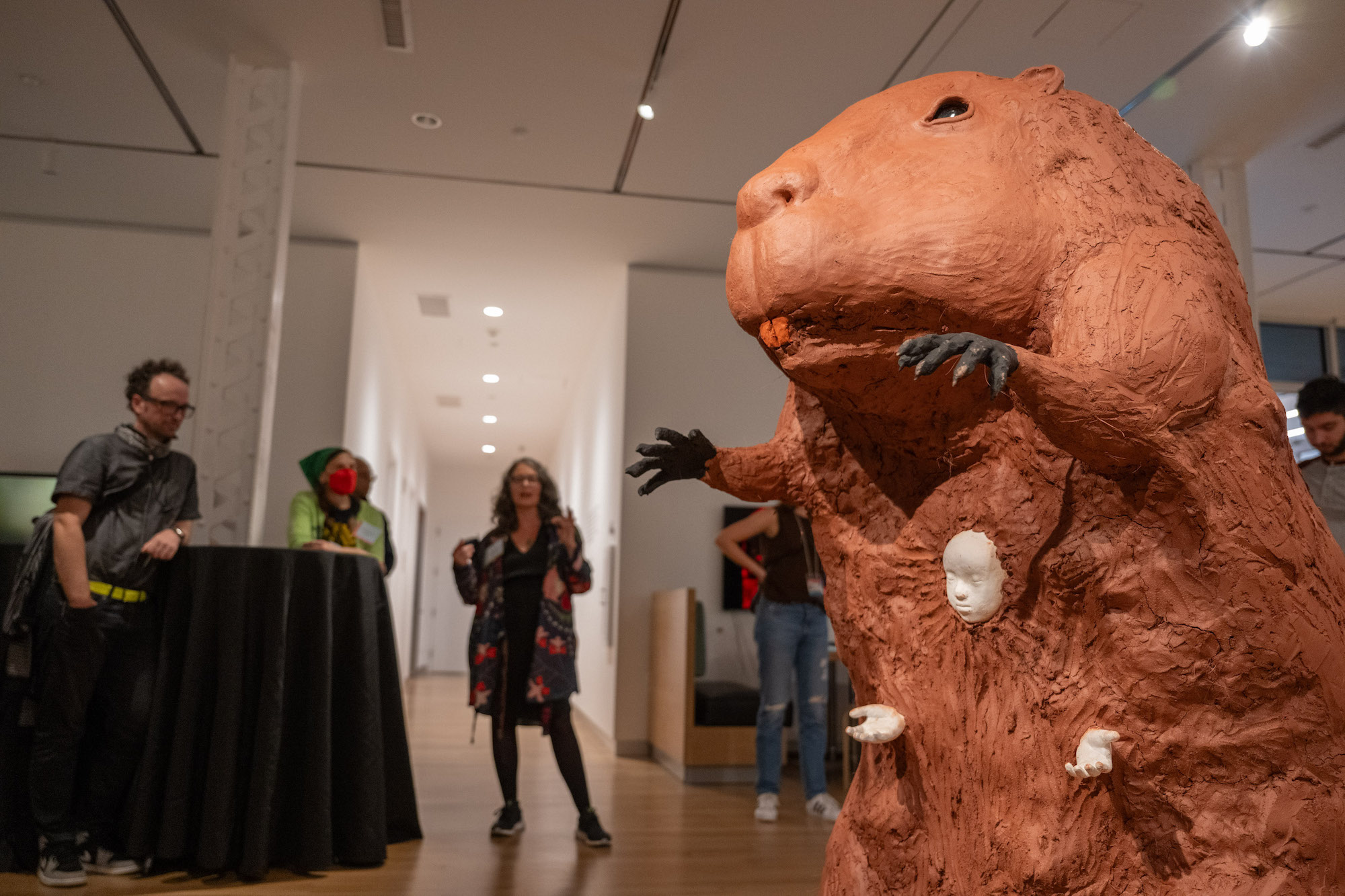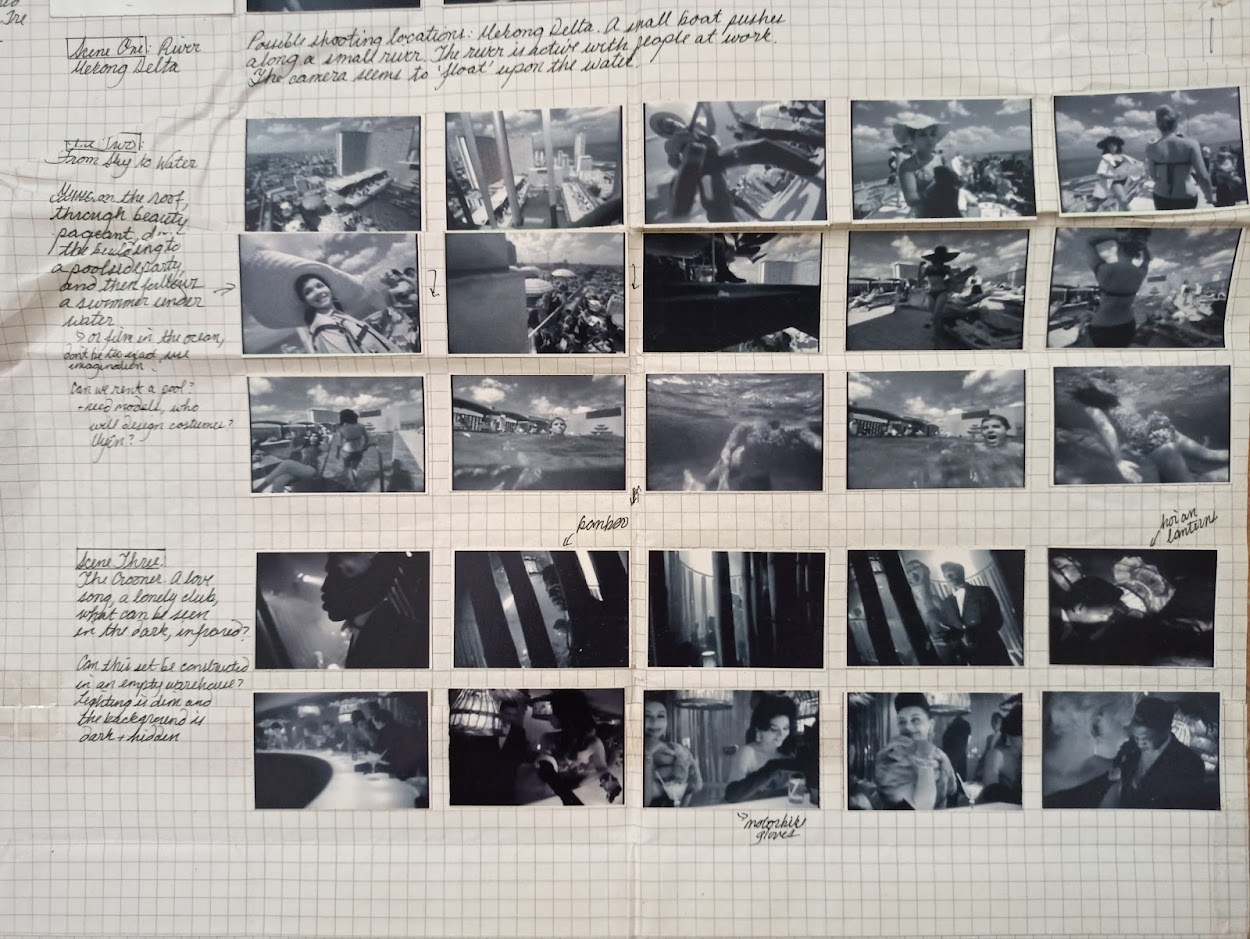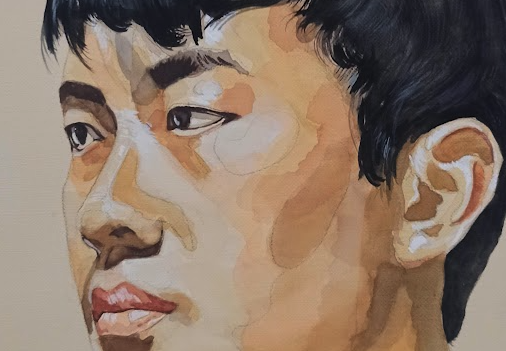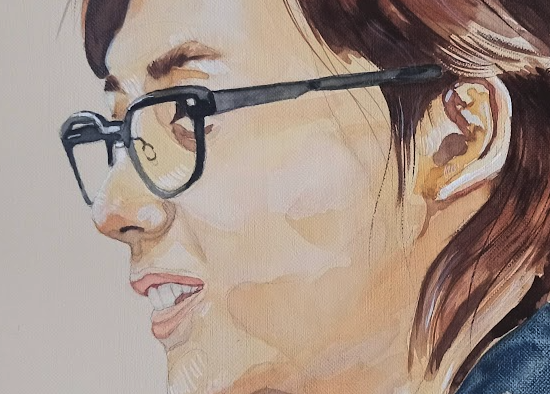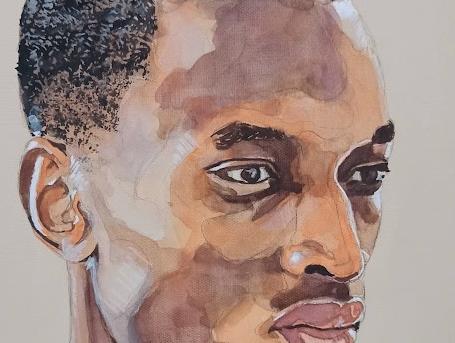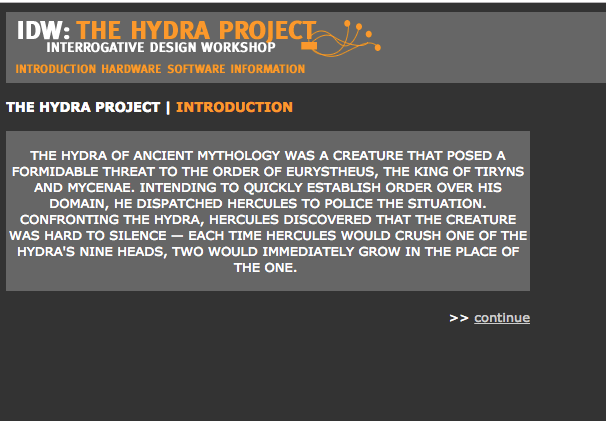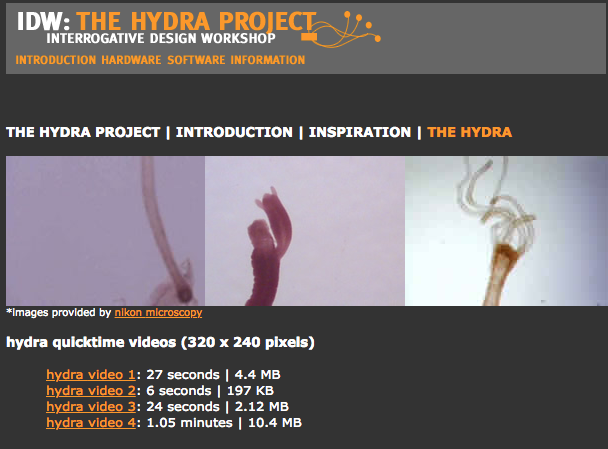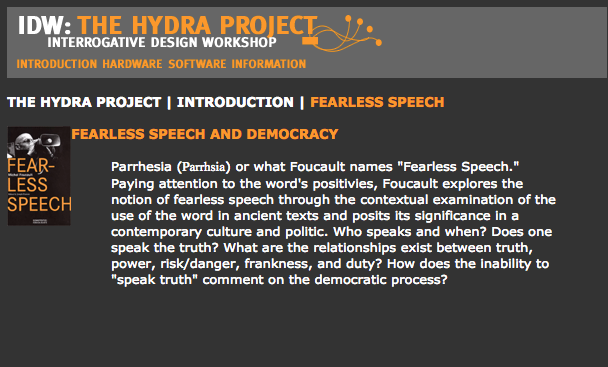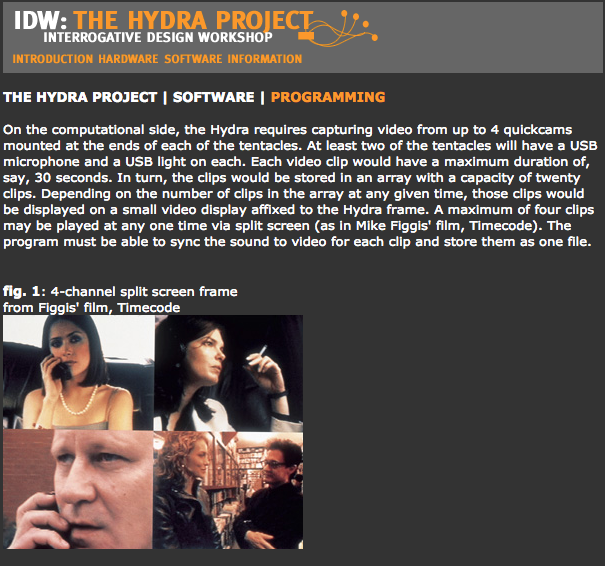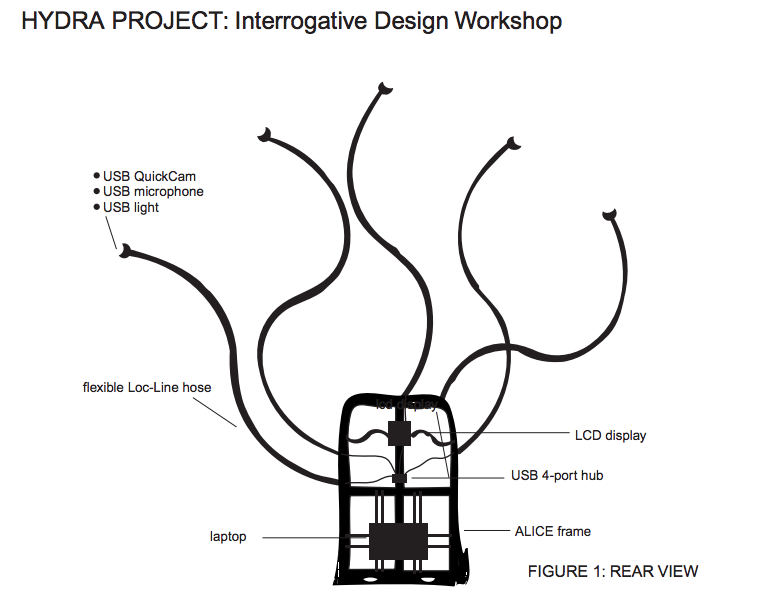The hydra of ancient mythology was a creature that posed a formidable threat to the order of Eurystheus, the King of Tryns and Mycenae. Intending to quickly establish order over his domain, he dispatched Hercules to police the situation. Confronting the Hydra, Hercules discovered that the creature was hard to silence — each time Hercules would crush one of the Hydra's nine heads, two would immediately grow in the place of the one.
There exists a direct relationship between power and visibility. The powerless – invisible, stripped, excluded – unheard and unseen, ignored and forgotten. Victims of rape, war, and other acts of violence and oppression often find their inability to bear witness to their experience psychologically and emotionally traumatic as the events themselves.
The HYDRA is a device worn by the mobile storyteller that records, stores and replays testimony from victims and witnesses of human trauma. By the act of speaking, the recovery process for victims of abuse and oppression begins. By the act of being seen, the victim claims for his or herself the space to challenge history, memory and identity.
Borrowing from certain aspects of the hydra of ancient Greek mythology, the modularity of the HYDRA enables the operator to add/remove plug-and-play devices and adjust the length, number and position of "tentacles" in minutes. Should a tentacle and attached device come undone or "lopped off" during practice, another can be replaced and functional in seconds. USB (and in later implementations, USB2 and Firewire) devices include cameras, microphones, lights and storage devices allow the operator to record testimony under a variety of environmental and social conditions in one location without the need for an external power supply. These testimonies will be digitally stored on a laptop hard drive or other storage device (and in later implementations, transmitted via wireless networks).
The Hydra will certainly need to be performed. Perhaps the operator walks the city as a situationist act and in other situations remains stationary and immobile, drawing attention to the visual juxtaposition of self to environment. Ultimately, the Hydra operator acts as a pollinator distributing the messages to other peoples and locations in the process of sharing and acquiring new testimony (sort of like a bee).
Ironically designed to be "disarming", the device, hopefully, will be unusual enough to attract public attention while appearing to be non-threatening to those wishing to record their testimonial. From other recent experiences with back-mounted wearable devices in public spaces, we believe the potential for creating unique and meaningful spectacles is unlimited.
This work was completed during the Interrogative Design Workshop (IDW), founded by artist Krzysztof Wodiczko at the Massachusetts Institute of Technology (MIT). The website for the Hydra project can be found in the download link to the right.
DETAILS
2002
Hydra (2002). Mixed media and computation
Massachusetts Institute of Technology (MIT).
